 Text: Alge Ram / Photography: private archive
Text: Alge Ram / Photography: private archive
The couple spends year in a yurt
After the engagement, the anthropologist Vaida Braziunaite had to face a romantic challenge. Together with her future husband icelander Haukur Sigurdson she spent one year in a little yurt, built on a wintry valley between the polar light and frenzied storms.
So one day you just decided to live in a yurt?
We were tired from studies, work, and routine, when everything was according to the schedule. We were in need of something more alternative. Some years ago, there a film was being shot in Iceland, which is called “The Secret Life of Walter Smitty”. Three Mongolic yurts were brought to the place, but they weren’t used. My husband’s uncle, who’s working in the cinema industry, bought them – it was he who suggested that we could borrow one of yurts for unlimited time. I was seduced by this idea. We didn’t need to invest much to live in a yurt. We got a permission to build it in the North-West of Iceland, in the region of Westfjords, which is seven kilometers away from a little village Thingeyri where the population reaches only 250 people. There was not a single spirit around within seven kilometers, only snow and sharp winds.

And how’s the life in a yurt like?
The biggest challenge was to build the base of the yurt. As there’s very few trees in Iceland, the land’s owner suggested pulling down the old economic building to use its wood. That’s exactly what we did. The pulling down took one month, but we had boards for the base. Then we built the yurt in late autumn when the earth was already frozen. I recall coming home with blue fingers and toes. We managed to assemble it in one day. It’s true that Mongolian yurt can withstand extreme colds and extreme heat, but it’s not suitable for humid climate, so we had to acquire several additional layers of tarpaulin. On the top we placed the kind of net which is used for fishing, so that the winds wouldn’t carry the yurt away. We did this because the valley in which we started living was really stormy.

How did your days and nights in a remote valley look like?
We borrowed a stove from the neighbours and put a chimney out on the top of the yurt through the little window so it was warm inside. We had piles of logs, but they were loaded further away in a shed. Our wish was to try to live a little bit more alternatively, the way people used to live in ancient times. During the day we used to do the simplest, the most primitive things. Once we got up, we had to fire the hearth and rush back to the bed, because it would be terribly cold. When the yurt becomes warmer, it’s possible to get up and go scoop water, bring additional logs if needed, split them. Usually it took up two hours to prepare the breakfast – make the coffee and the porridge. For the first two months, we wanted to take a look and see what’s happening around us. We spent a fairly big amount of time skiing, and as there was pond nearby, we would go there and skate. Our friends had stable in the town, so sometimes we would go horseriding. But usually all the time was just for us. We had some savings so we could afford live freely like this.



So it means you didn’t work at that time?
The truth is that we both worked. Not so much during the first months, as we wanted to experience fully the new kind of living, but later on we started working normally, and got engaged in several projects. My husband works in a slow tourism sphere, so usually he had to work on the computer and with the camera. The strange thing is that we spent much time on computers while living in the yurt. I coordinated the festival of anthropological movies, later decided to deepen my knowledge of Icelandic language and got a job in a kindergarten of the village. So, from February I would go to my work in the village and my husband would go to the friends’ place. They have a café that is open only during the summer season, so Haukur made an office for himself there. The working hours finish on 4 p.m. and then our time would commence. We would come back to primitive jobs – splitting logs, preparing the meals.

We had a goal to spend as much time as possible with a book near the fireplace. And the nightlife was present in the yurt. Many nights were spent sitting and looking at the polar light. Our valley was one of the most ideal spots to observe this natural phenomenon. It is said that one has to hunt the polar right. We didn’t have to do it, all it took was to go outside, lift the head up and see it. We were fully there, that was our home. We used to sit, film, take a walk and then get back home have a cup of tea, read and then go outside again.

We wanted to try slow lifestyle – as we were recently engaged, this kind of adventure seemed to be possible before creating the family. It was also a certain challenge – I mean, spending everyday together. Previously, we would be together only in the evening for some hours, and now we had to be together the whole day.
Did you find what you were searching for in that adventure?
Yes. Now we have a family and our son Kari Vakaris Hauksson is eight months old.
For how long did your yurt adventure last?
Exactly one year passed between the moment we built the yurt and the moment we pulled it down. During that time, we spent some months traveling. In autumn, we got back to Lithuania and got married. But at that time yurt was our home, our everything. Nothing is locked in Iceland, homes are left open, there’s no padlock or hook. You just live in the middle of the fields and know that nothing bad is going to happen to you. The strangest feeling was when my husband was away for some time in spring, and I had to live in a yurt alone…


And what was that feeling?
At first, I was really afraid. I would lie in a yurt and think: so what happens in the doors open? There were some uneasy nights, full of storms. Those several layers of the yurt’s material don’t protect from the fire, there’s a feeling as if you were living outdoors. However, there were no animals around, only polar foxes. They could be heard, but we never actually saw them. Or, perhaps, accidentally a polar bear could wander from the Greenland. It has occurred, because there’s a little distance between eastern Greenland and the North-West Greenland. One spring a bear came on an ice-floe…

What has such life given you? What has it changed in you, your attitude towards the surroundings, people, yourself?
My attitude towards the rubbish has changed. Up until now, I try to live and leave as little rubbish after me as possible. When nature is this close to you, the relation with it becomes very intimate. We had to transport our litter to the village, which is seven kilometers further. So we started paying much attention to the packages when shopping – we’d choose paper ones so that they could burn in the fire.
And, of course, this time we spent together contributed to our friendship. We could concentrate on our feelings, and that is more important than expensive trips and hotels. The things that count are just being together, playing, reading, wandering, skiing. We constantly try to remind that to ourselves and do everything to keep this level of closeness.
Probably there was no internet and telephone line in the yurt?
It sounds interesting, but there actually was very good Internet. We didn’t have electricity, though – only some kerosene lamps and projectors. We’d charge the computer in the café of our friends and it was possible to work with it for two hours. So our work time in the yurt was limited. If certain ideas arrive to head, we’d write them in the notebook. We could afford that for the whole year.
And later you just decided that it was time to stop?
We got married in autumn. I had already been pregnant for three months then. After the marriage, we went back to the yurt but it was already the end. There was more work to do, and we needed a bigger creative space – we found it in Isafjordur, capital of the North-East. And then we bought the apartment. We always knew that yurt would be our project of the year and there were no plans to live there all the time.
Do you like North or you happen to be there because of love and family?
I found myself in North during the bachelor studies. I studied library science and informations in Lithuania. Later on I moved to Finland and I liked it very much to be there. During the last year of the studies, I obtained a scholarship to go to Oslo, where I could immerse myself in journalism studies with the direction towards documentary films. I loved it, so I started searching for a similar program for my master studies. That’s how I came to Norway, Tromso, and started studying visual anthropology. And then I met my future husband.

I think I have well established myself in the North. That unconscious way of decisions dragged me further and further to the North. Maybe, speaking geographically, Iceland is not so much in the North like Norway, where I used to live, but the climate here is much wintrier – I mean those winds, snowstorms… Maybe when some years have passed we’ll want to come back and realize an interesting project in Lithuania. The biggest reason for this would be our son – we want him to learn speak Lithuanian language and get acquainted with his own culture. His icelandic name is Kári, which signifies wind. He was born on a very windy day and we wanted his name to reflect the place where we live – North West. That’s why I call him Vakaris (Lithuanian version), and my husband calls him Kári.
If you had to think of one fatal decision which totally changed your life, which would it be?
I think the biggest change happened when I met my husband. It’s true that firstly I decided to change the direction of my studies so that it would better fit my character, my constant hunger for adventure and communication. That’s why the studies and my relationship with Haukur completely changed my life. My friends and my hobbies changed. In Lithuania, the country where I grew up, we used to live more sedentarily and spend more time at home, whereas now we’re much more often outside and even in not very pleasant weather conditions.
It was probably due to very strong love that I decided to follow my husband. He was the one who knew from the very first day of his studies, that everything he’d do – all the tasks, written assignements and movies will be about his native region. And he planned on getting back home after the studies. But when we started thinking about the future, Haukur didn’t insist on going back to Iceland – he didn’t want to make decisions for both of us. The yurt was a challenge. We’re open to new things and changes and if we come up with comething interesting, we’ll go somewhere. But now our place is here.


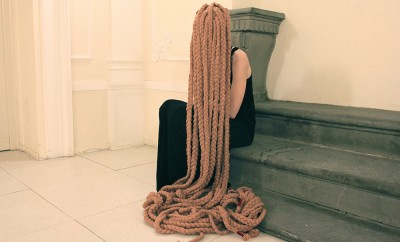
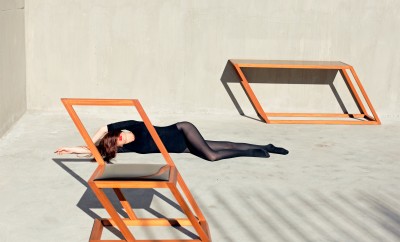
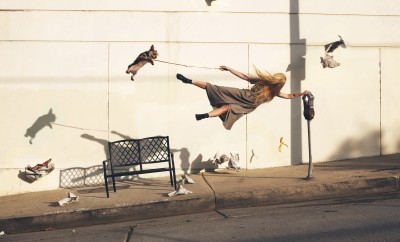

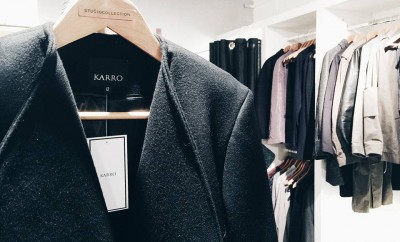
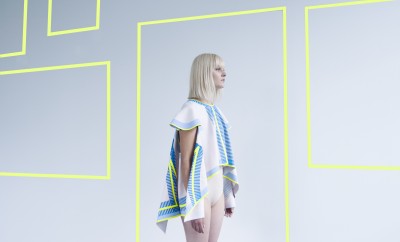

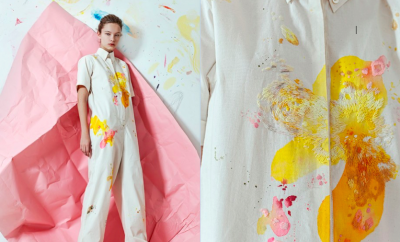

You must be logged in to post a comment Login